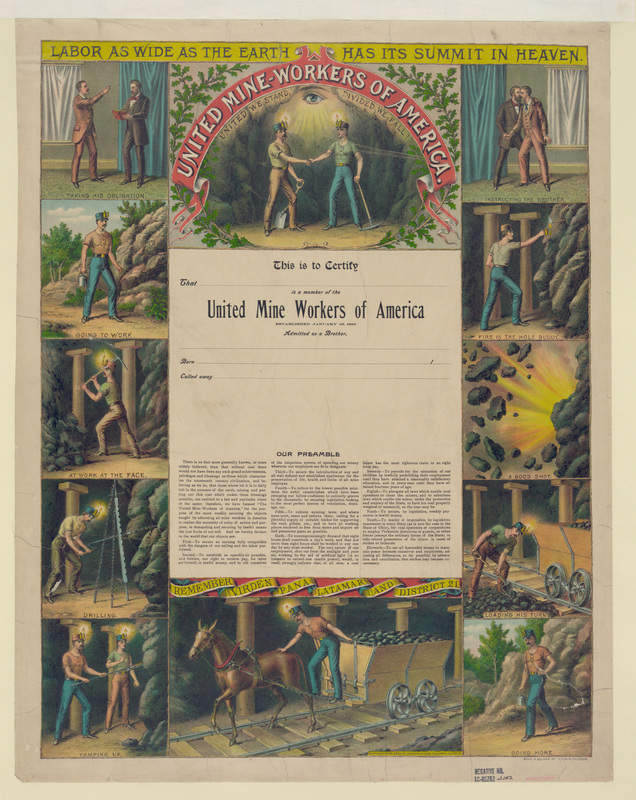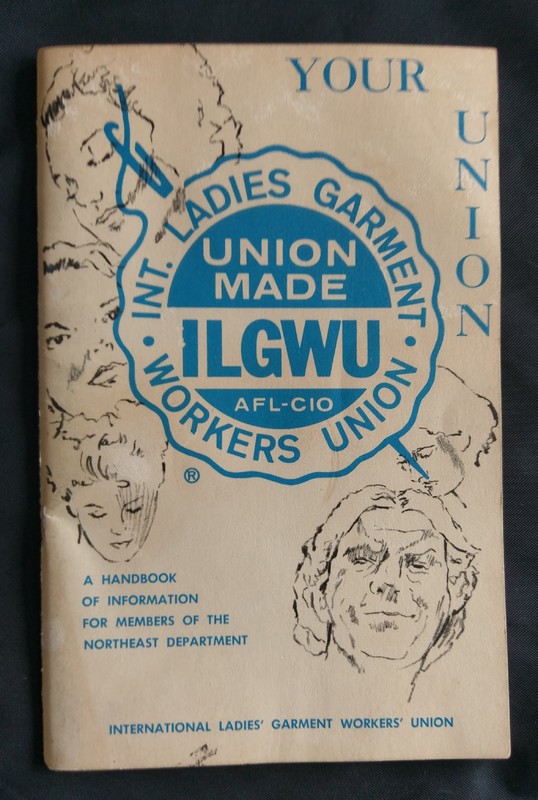Labor Unions
Unions have a long history in Nanticoke. The anthracite coal miners were important to the United Mine Workers union, even prompting a visit to Nanticoke from its president, John L. Lewis in 1904. By 1923, 8 UMW locals were active in Nanticoke. The Anthracite Strike of 1902 was significant to the labor movement nationally, as it was the first intervention by the U.S. government.
In the late 1920s through the 1930s, Communist organizers had organized some anthracite coal workers into the National Miners Unions which clashed with the UMW. Although northeastern Pennsylvania was deeply ant-Communist, the desparation of the Depressions led some residents to seek aid from any organization willing to help. Some Communist groups reportedly met in Nanticoke.
Unions were relevent to the silk, textile and garment industries as well. Silk manufacturers set up in the Wyoming Valley area to avoid the unions that were prevalent in the Paterson, NJ silk mills, as well as to take advantage of the cheap labor of desperate coal miners' daughters and wives. Duplan Silk Company was reputed to be vehemently anti-union. While unions and strikes were able to win some demands at times, ultimatey the industry picked up and moved again, this time to the South, to avoid paying fair wages. Similarly, when the cigar makers attempted to form a union at the General Cigar Factory, the factory was notorious for closing down.
Efforts to organize textile workers ocrrued in the late 1920s by the United Textile Workers Union as well as the rival and Communist-led National Textile Workers Union.
To organize garment workers, the International Ladies Garment Workers Union stepped in. Formed in 1900 to help workers overcome unsafe working conditions primarily in New York where the garment industry was centered, the ILGWU sought to organize workers in northeastern Pennsylvania where manufacturers opened "runaway shops" in an attempt to escape the unions. Min Matheson, sent by the ILGWU, is credited for organizing the Wyoming Valley area from 650 union members to over 11,000. The Nanticoke ILGWU Local 327 was charted in 1956.
The ILGWU helped secure for members retirement and health benefits, a 35 hour work week, paid vacation and parental leave. Beyond work conditions, the union also supported members by encouraging their education and participation in community activities. Unity House, located in the Poconos, was established in 1919 as a vacation resort where union members could bring their families and also attend conferences, retreats and muscial performances up to 1989.
In 1995, the ILGWU merged with the Amalgamated Clothing and Textile Workers Union to form UNITE, then merged again with the Hotel Employees and Restaurant Employees union in 2004 to form UNITE HERE.
Other possible unions in Nanticoke:
Boot and Shoe Workers Union?
Brewers Union?
Union Barbers, Local 880
Resources for further study:
Coal miner unions
Blatz, Perry K. "Local Leadership and Local Militancy: the Nanticoke Strike of 1899 and the Roots of Unionization in the Northern Anthracite Field." Pennsylvania History. 58.4 (1991): 278-297.
Blatz, Perry K. Democratic Miners: Work and Labor Relations in the Anthracite Coal Industry : 1875-192. Albany: State Univ. of New York Press, 1994.
Cornell, Robert J. The Anthracite Coal Strike of 1902. Washington: Catholic University of America Press, 1979.
Greene, Victor R. "A Study in Slavs, Strikes, and Unions: The Anthracite Strike of 1897." Pennsylvania History: A Journal of Mid-Atlantic Studies 31.2 (1964): 199-215.
Laslett, John H. M. The United Mine Workers of America: A Model of Industrial Solidarity? Pennsylvania: The Pennsylvania State University Press, 1996.
Spear, Sheldon. "Wyoming Valley Murders of the 1930s" in Chapters in Northeastern Pennsylvania History: Luzerne, Lackawanna, and Wyoming Counties. Shavertown, Pa: Jemags & Co, 1999.
Textile unions
The Kheel Center ILGWU Collection
Golin, Steve. The Fragile Bridge: Paterson Silk Strike, 1913. Philadelphia: Temple Univ. Pr, 1988.
Howard, Walter T. ""Radicals Not Wanted": Communists and the 1929 Wilkes-Barre Silk Mills Strikes." Pennsylvania History. 69:3, Summer 2002.
Salmond, John A. The General Textile Strike of 1934: From Maine to Alabama. Columbia, Mo. [u.a.: University of Missouri Press, 2002.
Staskavage, Angela, Kenneth Hughes, Marguerite Shaw, Susan Donio, Thomas Donahue, and James P. Rodechko. Nanticoke (Pa.) Women Oral History Project. , 1977. Archival material.
Stein, Leon. Out of the Sweatshop: The Struggle for Industrial Democracy. New York: Quadrangle/New York Times Book Co, 1977.
Tax, Meredith. The Rising of the Women: Feminist Solidarity and Class Conflict, 1880-1917. Urbana: University of Illinois Press, 2000.
Waldinger, Roger. "Another look at the International Ladies' Garment Workers' Union: Women, industry structure and collective action." In Women, Work, and Protest: A Century of U.s. Women's Labor History. Milkman, Ruth. Boston: Routledge & Kegan Paul, 1985. 86-109.
Wolensky, Kenneth C, Lois Hartel, Sam Bianco, Pearl Novak, David Kozemchak, and Kathleen Kapes. The Growth and Decline of the Women's Garment Industry: And the Ilgwu in Pennsylvania's Northeastern Anthracite Region, 1930 to Present. Nanticoke, PA: Luzerne County Community College. Media Dept, 1999.
Wolensky, Kenneth C, Nicole H. Wolensky, and Robert P. Wolensky. Fighting for the Union Label: The Women's Garment Industry and the Ilgwu in Pennsylvania. University Park, Pa: Pennsylvania State University Press, 2002.
Cigar unions
Byrne, Harriet A. The Effects on Women of Changing Conditions in the Cigar and Cigarette Industries. , 1933.
"Local 258 -- Wilkes-Barre, PA." Archives of the Cigar Makers' International Union, Special Collections, University of Maryland Libraries.
General labor history
Howard, Walter T. Forgotten Radicals: Communists in the Pennsylvania Anthracite, 1919-1950. Lanham, Md: University Press of America, 2005.


